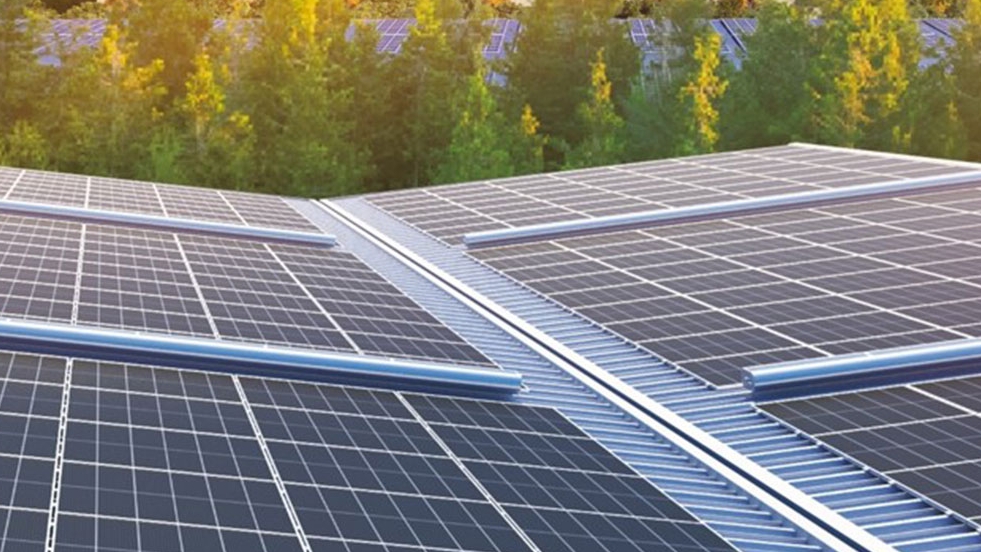光伏发电是什么,一文带你了解全面
光伏发电是一种利用半导体材料的光生伏特效应,将太阳光能直接转化为电能的技术,它是可再生能源利用的重要方式之一,具有清洁、可持续的显著优势。
Photovoltaic power generation is a technology that utilizes the photovoltaic effect of semiconductor materials to directly convert solar energy into electrical energy. It is one of the important ways to utilize renewable energy and has significant advantages in cleanliness and sustainability.
从工作原理来看,光伏发电的核心是太阳能电池板。太阳能电池由半导体材料(如硅)制成,当太阳光照射到电池表面时,光子能量被半导体吸收,使电子获得能量脱离束缚,形成电子 - 空穴对。在电池内部电场的作用下,电子和空穴向不同方向移动,从而产生电压,若将电池片通过导线连接形成回路,就会产生电流,实现光能到电能的转化。多个太阳能电池片经过串联、并联后封装成太阳能电池组件,再配合逆变器、支架、汇流箱等设备,共同构成光伏发电系统。
From the perspective of working principle, the core of photovoltaic power generation is solar panels. Solar cells are made of semiconductor materials such as silicon. When sunlight shines on the surface of the cell, photon energy is absorbed by the semiconductor, allowing electrons to gain energy and break free from confinement, forming electron hole pairs. Under the action of the electric field inside the battery, electrons and holes move in different directions, generating voltage. If the battery cells are connected by wires to form a circuit, current will be generated, achieving the conversion of light energy into electrical energy. Multiple solar cells are packaged into solar cell modules through series and parallel connection, and then combined with inverters, brackets, combiner boxes, and other equipment to form a photovoltaic power generation system.
光伏发电系统主要分为独立式和并网式两类。独立式系统通常配备蓄电池,能将多余电能储存起来,在光照不足或夜间时为负载供电,适用于远离电网的偏远地区、户外通信基站等场景。并网式系统则直接与公共电网连接,所发电力可优先供自身使用,多余部分送入电网,不足时从电网取用,这种方式无需蓄电池,降低了系统成本,在城市建筑屋顶、大型地面光伏电站中应用广泛。
Photovoltaic power generation systems are mainly divided into two categories: independent and grid connected. Independent systems are typically equipped with batteries that can store excess electrical energy and provide power to loads during low light or nighttime conditions. They are suitable for remote areas far from the power grid, outdoor communication base stations, and other scenarios. Grid connected systems are directly connected to the public power grid, and the generated electricity can be prioritized for their own use. Excess electricity is sent to the grid, and when it is insufficient, it is taken from the grid. This method does not require batteries and reduces system costs. It is widely used in urban building roofs and large ground mounted photovoltaic power stations.

在特点方面,光伏发电具有显著的环保性,发电过程中不排放二氧化碳、二氧化硫等污染物,也不产生噪音,对环境影响极小。其能源来源广泛,太阳能是取之不尽、用之不竭的可再生能源,不受地域限制,只要有光照的地方都可利用。此外,光伏发电系统的组件寿命较长,一般可达 25 - 30 年,维护成本较低,运行过程中无需消耗燃料,能有效减少对传统化石能源的依赖。不过,它也受到自然条件的影响,发电量会随光照强度、日照时间的变化而波动,具有间歇性和不稳定性,需要通过储能技术或与其他能源互补来改善。
In terms of characteristics, photovoltaic power generation has significant environmental friendliness. During the power generation process, it does not emit pollutants such as carbon dioxide and sulfur dioxide, nor does it produce noise, with minimal impact on the environment. Its energy sources are extensive, and solar energy is an inexhaustible and renewable energy source that is not limited by geography. It can be used wherever there is light. In addition, the components of photovoltaic power generation systems have a long lifespan, generally up to 25-30 years, low maintenance costs, and do not require fuel consumption during operation, effectively reducing dependence on traditional fossil fuels. However, it is also affected by natural conditions, and the amount of electricity generated fluctuates with changes in light intensity and sunshine duration, exhibiting intermittency and instability. It needs to be improved through energy storage technology or complementary with other energy sources.
光伏发电的应用场景十分丰富。在民用领域,可安装在居民屋顶,为家庭提供电力,降低电费支出;在工业领域,大型地面光伏电站能大规模发电,为工厂、企业提供清洁能源;在交通领域,光伏路灯、光伏充电桩等设备已逐步普及;在农业领域,光伏大棚将光伏发电与农业种植相结合,实现了 “上发电、下种植” 的立体利用模式,提高了土地利用效率。
The application scenarios of photovoltaic power generation are very diverse. In the civilian field, it can be installed on residential roofs to provide electricity for households and reduce electricity bills; In the industrial field, large-scale ground-based photovoltaic power stations can generate electricity on a large scale, providing clean energy for factories and enterprises; In the field of transportation, devices such as photovoltaic street lights and photovoltaic charging piles have gradually become popular; In the field of agriculture, photovoltaic greenhouses combine photovoltaic power generation with agricultural planting, achieving a three-dimensional utilization mode of "upper power generation, lower planting" and improving land use efficiency.
随着技术的不断进步,光伏发电的转换效率持续提升,成本逐渐下降,其在全球能源结构中的占比正不断提高。作为应对气候变化、推动能源转型的重要手段,光伏发电在实现 “碳达峰、碳中和” 目标过程中发挥着越来越重要的作用,展现出广阔的发展前景。
With the continuous advancement of technology, the conversion efficiency of photovoltaic power generation continues to improve, the cost gradually decreases, and its proportion in the global energy structure is constantly increasing. As an important means to address climate change and promote energy transition, photovoltaic power generation plays an increasingly important role in achieving the goals of "carbon peak and carbon neutrality", demonstrating broad development prospects.
本文由光伏发电情奉献.更多有关的知识请点击:http://www.zdnygf.com我们将会对您提出的疑问进行详细的解答,欢迎您登录网站留言.
This article is a friendly contribution from distributed photovoltaic power generation For more information, please click: http://www.zdnygf.com We will provide detailed answers to your questions. You are welcome to log in to our website and leave a message
新闻推荐
product recommendation联系方式
Contact Information

 TEL:0531-82390078
TEL:0531-82390078 TEL:18805312017
TEL:18805312017 MAI:sdzdny001@163.com
MAI:sdzdny001@163.com 公司地址: 济南市历下区山大路157号
公司地址: 济南市历下区山大路157号 天合蓝天·山东种电
天合蓝天·山东种电 备案号:鲁ICP备17052940号-2
鲁公网安备37010202700164号
备案号:鲁ICP备17052940号-2
鲁公网安备37010202700164号
 网站地图|XML|TXT
网站地图|XML|TXT

扫一扫方便咨询我们

截屏,微信识别二维码
微信号:18805312017